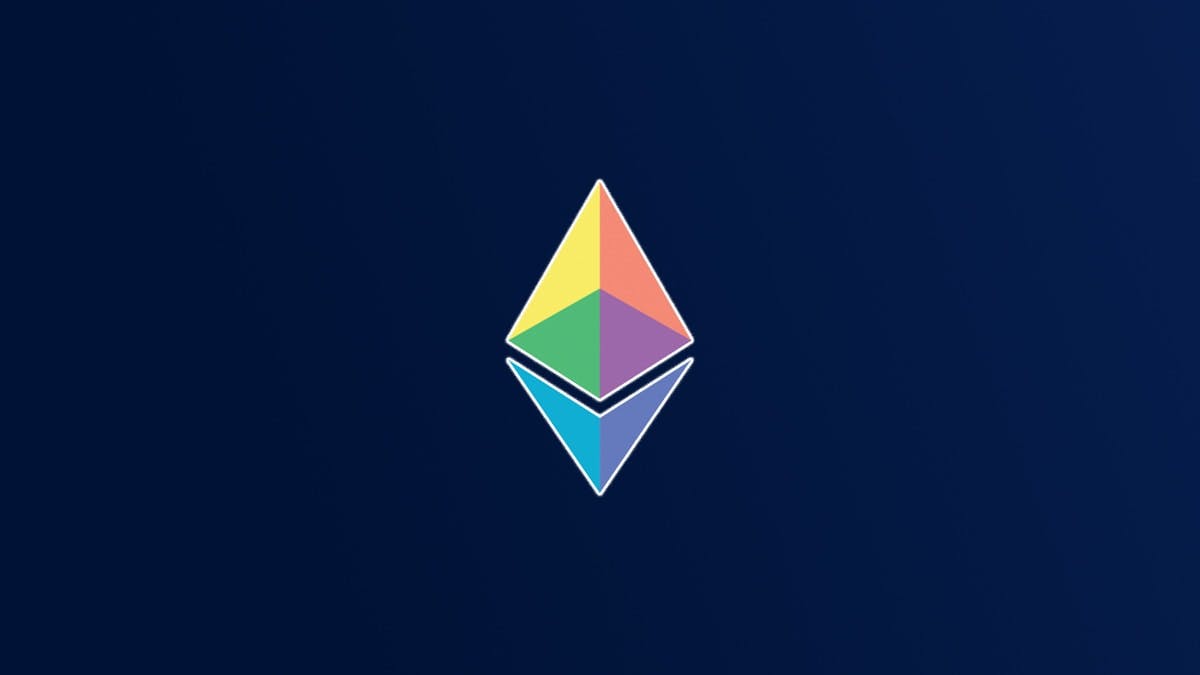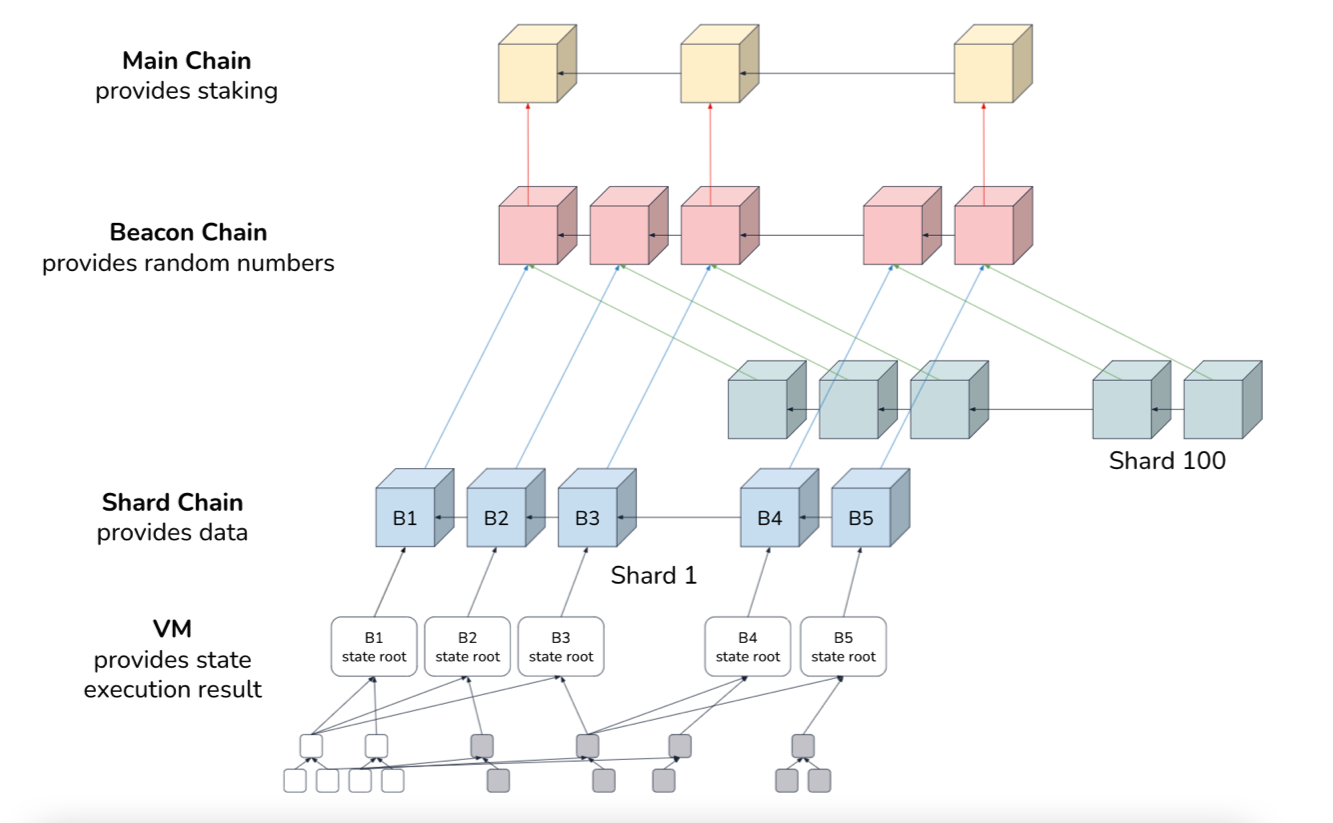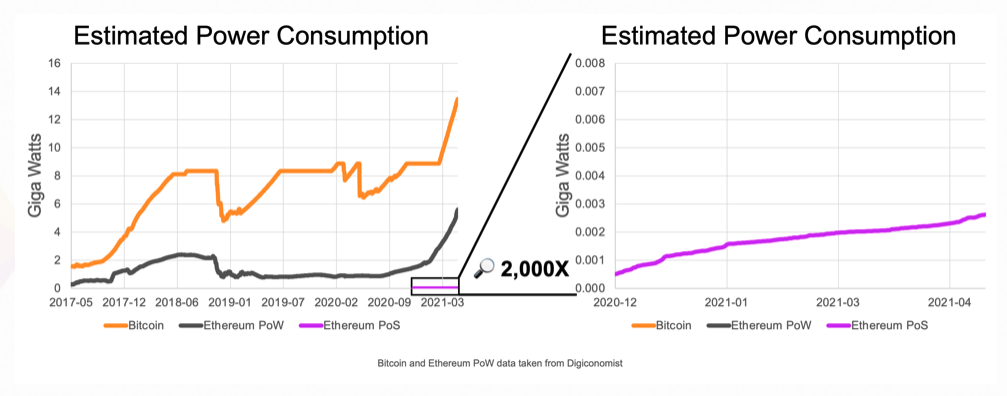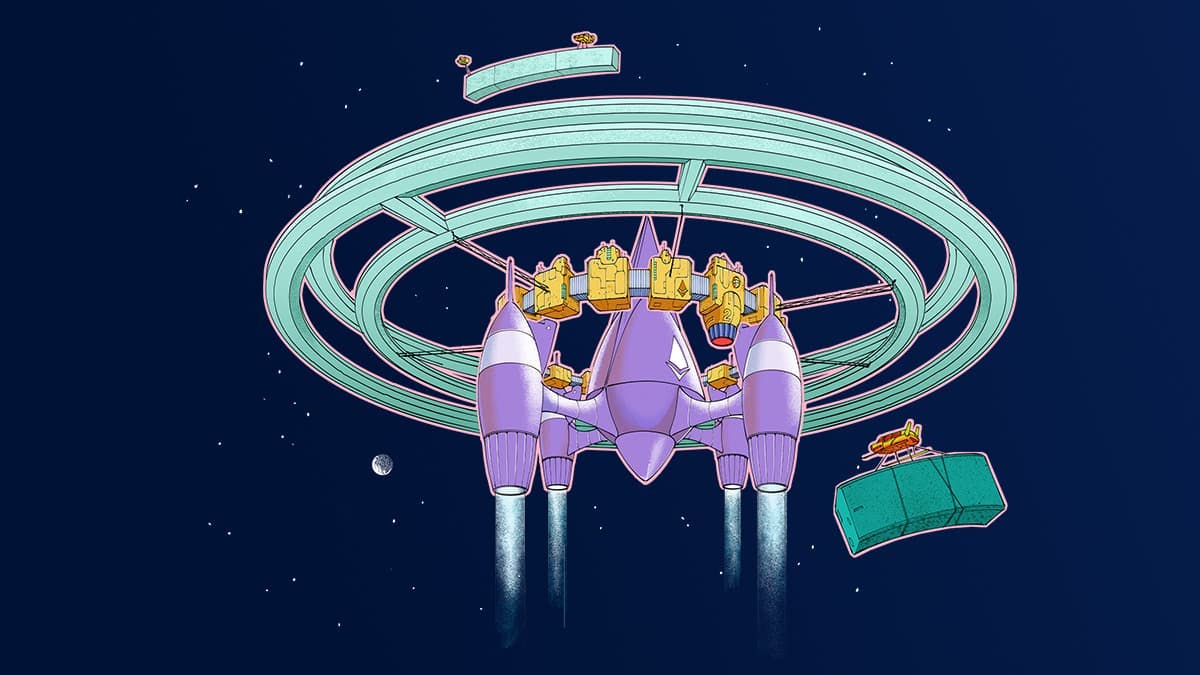
The New Ethereum Upgrade (2.0)
Written by Alchemy

Notice: This overview contains outdated content. Since written, Ethereum successfully completed "The Merge" and transitioned to using Proof-of-Stake consensus provided by the Beacon Chain. The plans for sharding mainnet pivoted towards a layer-2 centric roadmap, powered by danksharding and modular design principles.
When Ethereum first laid the groundwork for a world of new decentralized possibilities, it attracted users with its native support for smart contracts and decentralized applications (DApps). However, its adoption by millions is energy intensive and has caused extremely high gas fees, network congestion, long transaction times, and large blockchain size–problems not uncommon with proof of work, the consensus mechanism Ethereum employs.
What is Ethereum 2.0?
Ethereum originally called their new upgrade Ethereum 2.0 or Eth2. But, as of January 24th 2022, they've deprecated that term due to misunderstandings among users. Ethereum now favors the terms “execution layer” (Eth1) and “consensus layer” (Eth2).
This Ethereum upgrade was never meant to replace the execution layer, but to supplement it. So there is no Eth2, only a better, more evolved Ethereum.
This upgrade, also called Serenity, aims to solve some of the structural problems of Ethereum by making it more sustainable, scalable, and secure.
Ethereum will soon include two key upgrades: Proof of Stake (PoS) and Sharding.
Switching Consensus Mechanisms from Proof of Work (PoW) to Proof of Stake (PoS)
Proof of stake and proof of work are known as consensus mechanisms. These mechanisms allow all the computers of a given crypto network to agree on what transactions are valid.
PoS is a consensus mechanism in which transactions are confirmed by a network of validators who are “staking” their ETH, rather than miners conducting PoW computations. By shifting away from the computationally-intensive PoW process, Ethereum will be vastly less energy intensive going forward.
Adding Sharding
In sharding, the blockchain is separated into sections, spreading the load of the network. Previously nodes had to process the entire blockchain’s transaction, but with sharding, nodes will now only maintain their shard’s transactions.
Transitioning to Proof of Stake
Ethereum’s planned move comes at a time when new blockchains like Algorand and Solana are growing in popularity due in part to their PoS advantages over Ethereum. These advantages result often in lower transaction fees and faster time-to-finality (speed).
Many see proof of stake and similar consensus mechanisms as the future standard, including Vitalik Buterin, the founder of Ethereum, who believes most blockchains will eventually utilize proof of stake.
How do Proof of Stake and Proof of Work Differ?
Ethereum currently uses PoW, initially pioneered by Bitcoin. PoW consists of miners, often in groups known as mining pools, competing to solve complicated mathematical problems. In this process, miners race to compute a hash that matches Bitcoin’s current target. The first to find this correct hash, ultimately updates the blockchain with the newly verified transactions and receives the chain’s token as a reward.
While PoW is a proven and secure method of consensus, it has become an increasingly impractical and energy-intensive process as blockchain networks scale. Smart contract compatible networks like Ethereum can generate significant transaction volume. Validating these transactions using PoW requires immense computing power.
PoS solves this by replacing mining with a staking mechanism that requires validators to deposit a set amount of the chain’s token as collateral in order to participate as a validator in the network. Unlike PoW, PoS requires significantly less computational power because instead of competing with each other all at once, one validator is chosen at random.
When a validator is chosen, they win the right to write to the blockchain, and that information is then validated by the rest of the network in a process known as attestation. In return, validators are rewarded with the chain’s token. If a chosen validator proposes an incorrect or malicious block, it loses its stake in a process known as slashing. In order to run a validator node on the upgraded Ethereum, one has to stake a minimum of 32 ETH.
What is Sharding?
Sharding, a common concept in computer science, is the idea of splitting a database to spread the load. For Ethereum, this will mean splitting the network into 64 chains known as “shards.” Similar to the current Ethereum Mainnet, each shard will eventually contain its own set of account balances and smart contracts.
By separating the blockchain into multiple parts, validators will no longer be responsible for processing every transaction broadcasted on the Ethereum network. Validators will instead verify new blocks on their own shard, which a “committee” (128 randomly selected validators)then confirms on the main Ethereum chain. Once a shard block has enough attestations, a “cross-link” is created with the Beacon Chain to confirm the transactions for the entire network.

The Beacon Chain is the main coordinating mechanism for the shards. It is responsible for relaying shard state information to and from other shards, as well as managing the validator process. The Beacon Chain will generate random numbers to assign stakers to validate the shard chains.
How This Will Affect Sustainability?
Since PoS relies on staking currency rather than computing power like PoW, it is significantly less energy-intensive. This is an important improvement for Ethereum, as today it is estimated the network’s annualized consumption is 112.9 TWh, roughly equivalent to the Netherlands’ annual consumption (a country of 17.4 million people).
The Ethereum development team estimates that this transition could cut energy consumption by 99.95%.

How This Will Affect Scalability?
Along with energy benefits, PoS and sharding will greatly expand Ethereum’s capacity.
Currently, the Ethereum network can only support 15 transactions/second. With millions of users joining and new applications launching daily, this transaction limit has significantly limited Ethereum utility. Furthermore, current consensus mechanisms require each node to hold the entire network’s data, which has already surpassed 1TB. As the network scales, these growing disk space requirements are unsustainable and limit who can run a node.
With PoS, running a node will not require such significant investments in hardware and energy, and these costs won’t increase with the size of the network.
Additionally, adding sharding will ultimately decongest the network as more transactions can be processed simultaneously and storage requirements decrease. According to Ethereum's development team, these changes can result in throughput of 100,000 transactions/second.
How This Will Affect Security?
Another benefit of PoS is that it will increase decentralization and improve security. The hardware requirements will be lower, thereby lowering the barrier to entry for more nodes in the network. Following the upgrade, Ethereum will have at least 16,384 validators compared to the current 2,700.
Switching to PoS also further disincentivizes potential attacks. First, an attempted attack by validators could result in the protocol destroying the validators’ staked ETH, known as slashing. Second, attacks such as a 51% attack or Sybil attack would now require attackers to hold 51% of the staked ETH rather than controlling 51% of the network's mining power. Not only is this an unrealistic amount (~$15 billion USD as of today), it would likely lead to a significant devaluation of ETH, discouraging such an attack.
Where are we in Ethereum's Development Timeline?

Before the Upgrade
In 2015, Vitalik Buterin recognized the need for a PoS upgrade. Not only is this upgrade a significant upgrade for the platform, but it also fulfills Buterin’s long-awaited vision for Ethereum and one the core Ethereum Foundation team has been working towards for many years.
“You can think of Ethereum 1.0 as a prototype. We had to release something that we knew wouldn’t be scalable to prove that you could build decentralized applications.” — Joe Lubin, Ethereum co-founder.
The Beacon Chain
On December 1st, 2020 the Beacon Chain, the first part of this new upgrade, went live. Right now, the Beacon Chain and the Ethereum Mainnet exist as parallel chains and nothing has changed about how we use the original Ethereum chain.
The Beacon Chain update introduces PoS to Ethereum. Users can now use deposit contracts to transfer their ETH from the Mainnet to the Beacon Chain, enabling them to stake their ETH and further secure the Beacon Chain. However, withdrawals will not be possible until the Ethereum Mainnet “docks” with the Beacon Chain in the next update known as the “Merge.” This means people who stake their ETH will have to wait a bit to reap their rewards. Currently, there are ~10 million ETH staked out of a total supply of ~120 million.
Initially, validators will be adding new blocks to just the Beacon Chain. But once the “Merge” occurs, these validators will begin contributing blocks to the main Ethereum network.
In setting up PoS, the Beacon Chain provides the necessary infrastructure for sharding to occur. Eventually, the Beacon Chain will be in charge of randomly assigning the shard chain validators, which is necessary to provide secure sharding. Sharding is set to be added in the upgrade following the “Merge.”
The Merge
Originally planned for Q4’21, the Merge is now slated for Q2’22. Once complete, Ethereum Mainnet will become a shard within the Beacon Chain and PoS will become the official consensus mechanism. The Ethereum Mainnet shard will use PoS, ending both PoW and mining for Ethereum.
By adding the Mainnet, this new PoS Ethereum will now contain the ability to execute smart contracts and have all the full history and state of Ethereum.
It is important to note features such as withdrawing staked ETH will not be immediately supported following the Merge. These instead are slated to launch in the first hard fork that follows.
Shard Chains
Expected in 2023, shard chains will come in two updates.
Version 1: Data Availability
Shard chains will initially only provide extra data to the Ethereum network, adding in 63 new chains (64 in total). At launch, they won’t support transactions or smart contracts. However, these added chains, along with rollups, will dramatically improve transaction capacity and lower gas fees, paving the way for tens of thousands of transactions per second.
Rollups are a layer 2 solution that execute transactions off the main Ethereum chain (layer 1), then post completed transaction data to layer 1. This process of “rolling up” transactions into a single off-chain transaction has significant scalability benefits.
Version 2: Code Execution
The final part of the upgrade will make the shards more similar to the current Ethereum Mainnet, enabling them to process transactions and execute smart contracts. Shards will also be able to communicate, allowing for cross-shard transactions.
Whether this step is necessary is debated within the Ethereum community. Many consider the increase in transactions per second provided in “Version 1: Data Availability” to be sufficient, and thus no need for “smarter” shards.
It remains to be seen to what extent execution shards will be necessary to speed up delivery.
Broader Implications of Ethereum Upgrade
Once the Ethereum upgrades are realized, it may be that Ethereum resolves many of the bottlenecks facing its blockchain’s overall ecosystem. Gas prices at the time of writing easily exceed 80 Gwei (~$30), making transfers of smaller amounts impractical and therefore limiting the pool of users. Additionally, this congestion is causing long transaction times, in many cases taking hours; which further limits the current utility of Ethereum.
With Ethereum’s new advancements in sustainability, scalability, and security, many of these bottlenecks will be improved, paving the way for greater Ethereum adoption and use cases.
While the Web3 space as a whole will surely benefit from the technical enhancements the upgrade brings, some areas of DeFi such as lending and yield farming may see increased competition, as staking could become an alternative to these investment tactics. However, this is likely an unnecessary concern at least in the short term, as DeFi yields typically exceed the upgraded Ethereum’s staking rewards.
How long it will take for DApps to transition to this new technology remains an open question. Jack O’Holleran, CEO of Skale Labs - creators of the Skale network - suggests that most DApps will wait until the merge and likely will transition sometime after “at their leisure.” And although it's still unclear when exactly the upgrade will be complete or fully adopted, it is clear that upon completion, it will provide potential for sweeping improvements to the entire ecosystem.

Related overviews
What is Blockchain Sharding and How Does it Relate to Ethereum?
Learn About Safe (Justified), Finalized, and Latest Commitment Levels
Learn How Ethereum Transactions are Propagated Across the Ethereum Network

Build blockchain magic
Alchemy combines the most powerful web3 developer products and tools with resources, community and legendary support.